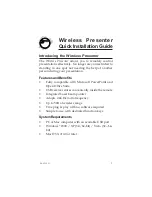
V1.02
Thom Hogan’s Complete Guide to the Nikon D300
Page 635
You’re ready to shoot.
Nikon includes a drawing showing where remote flashes need
to be positioned relative to the D300. I’ve actually found their
suggestions to be relatively conservative, especially in low
light, where the infrared component of the preflash is easily
seen by the remote flashes. In general, here are a few
positioning guidelines:
• In low light, the remote flash sensor doesn’t always have
to have a direct line of sight to the camera’s internal flash.
I’ve successfully hidden a remote flash behind the subject
(to light the background or provide rim light). This works
better over short distances, though.
• You should be able to achieve Nikon’s stated 33 feet
(10m) distance (within a 60° angle) in most situations, but
beware of situations where there is a great deal of infrared
energy present (some incandescent lighting produces
infrared)—you may have to give up some distance where
other infrared sources are present, as they’ll overwhelm
the sensor and it won’t see the faint output of the internal
flash.
• I’ve been able to achieve remote triggers at better than
120° angles, but only at close distances (10 feet [3m]).
• Triggering the remote flashes is only part of the equation.
In general, remote flashes doing TTL need to be within
30° of the camera-subject axis. In other words, the angle
formed by the flash/subject/camera needs to be 30° or
less. Why? Because when subjects are lit from the side,
the camera—which after all is doing the flash
calculations—doesn’t see the full reflection of the flash’s
output and may adjust its exposure incorrectly.
Finally, there’s yet one more wireless trick that isn’t described
in the Nikon manuals that every D300 user should know:
Flash Lock (called FV Lock by Nikon; FV stands for Flash
Value). This answers the problem of getting the internal flash
















































